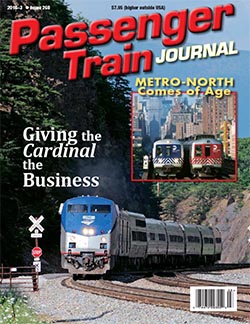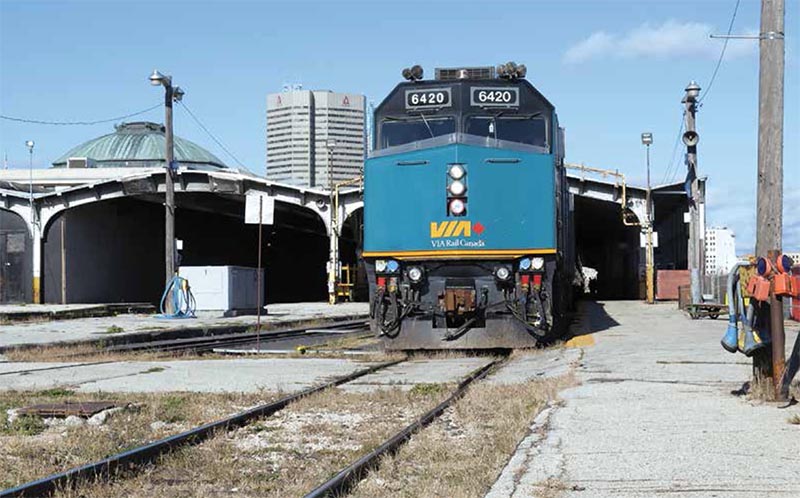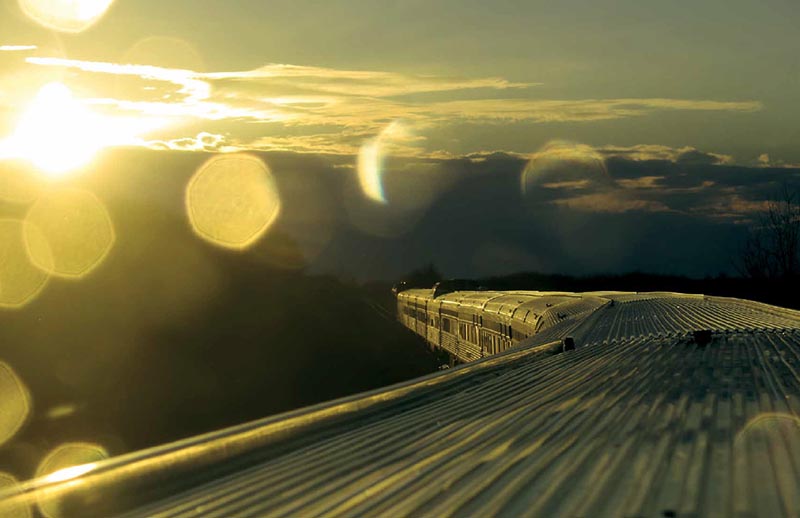 Trip Report
Trip Report
By James Armstrong/Photos as Noted
Traveling by rail from Windsor, Ont., to Churchill, Man., is a one-way journey of about 2,500 miles (4,000 km) on three different VIA Rail Canada trains. The western end of VIA’s Corridor links Windsor with Toronto, where connections can be made with trains 1 and 2, the transcontinental Canadian. In Winnipeg, Man., Churchill passengers make their connections to and from twice-weekly trains 692 and 693, the Hudson Bay.
My wife Nancy and I made the trip in October 2013. Our Toronto-bound corridor train, No. 76, left Windsor at 1:45pm. Its scheduled 5:52pm arrival in Toronto provided a comfortable connection with the tri-weekly Canadian’s 10pm departure that evening. (The Canadian currently operates just twice each week between mid-October and early May.) Since our Saturday departure from Windsor meant that No. 76 did not have a Business Class car, we purchased sandwiches from our coach attendant. When we got to Toronto, we looked around Union Station’s lower concourse for a vendor selling vegan food. This part of the station was closed in mid-2015 for redevelopment, and at this writing, in-station food options are limited.
I do like VIA’s “special meals,” as they call them, and we made our reservations out of Toronto far enough in advance that our requests could be accommodated, and they did an excellent job. To hold over until departure, we found a vegan food place and made our way to VIA’s Panorama lounge, located just off Union Station’s Great Hall. For Business Class and sleeping-car passengers, it is a fantastic place to wait for one’s train, with complimentary tea, coffee, juice, and soft drinks, newspapers and magazines, and free use of wi-fi and computer terminals. At about 9:30 p.m. the call came over the lounge’s p.a. system for us to make our way to the platform, and we dashed across the concourse. My wife was halfway up the escalator when I was stopped by an attendant who weighed our luggage. Once on the platform, we looked for our Manor-series sleeper. Sleeping cars have always fascinated me because they become a traveling home and they are the only ground transportation of their kind. Where else can one be traveling at any speed and see Mother Earth from ground level while laying in a comfortable bed? And the beds were comfortable.
 With the copper-clad rotunda dome of Winnipeg’s 1911 Union Station visible at left, VIA’s Hudson Bay, train 693, pokes out from the west end of the train shed prior to departure for Churchill in October 2015. Photo by Bill Schafer
With the copper-clad rotunda dome of Winnipeg’s 1911 Union Station visible at left, VIA’s Hudson Bay, train 693, pokes out from the west end of the train shed prior to departure for Churchill in October 2015. Photo by Bill Schafer
After getting settled into our two roomettes, Nancy wanted to visit the Park-series observation car, so we went there to find complementary pre-departure hors-d’oeuvres and sparkling wine. We took our “booty” into the dome, where we found seats and enjoyed the atmosphere. With a slight tug we were on the move, feeling like children on an adventure. VIA train 1 went through a maze of switches on its way out of Union Station’s western approaches, curved to the right, and gradually picked up speed as it headed north. It was very exciting to be on the second leg of our long journey, and after about ten minutes I decided to go back to the sleeper. It was very warm and comfortable, and the sheet and thick duvet were more than warm enough. To wake up at about 3:00 a.m. and watch trees go by, and perhaps see a distant house with a light still on and wonder if the occupants were still awake, and then being easily lulled to sleep again by the train’s motion has to be the best way of traveling.
Every VIA sleeping car has a private shower compartment, and it is quite easy to keep one’s balance and to regulate the water temperature. Considering how old these cars are—they were built for Canadian Pacific in the early 1950s—they are quite well maintained…



